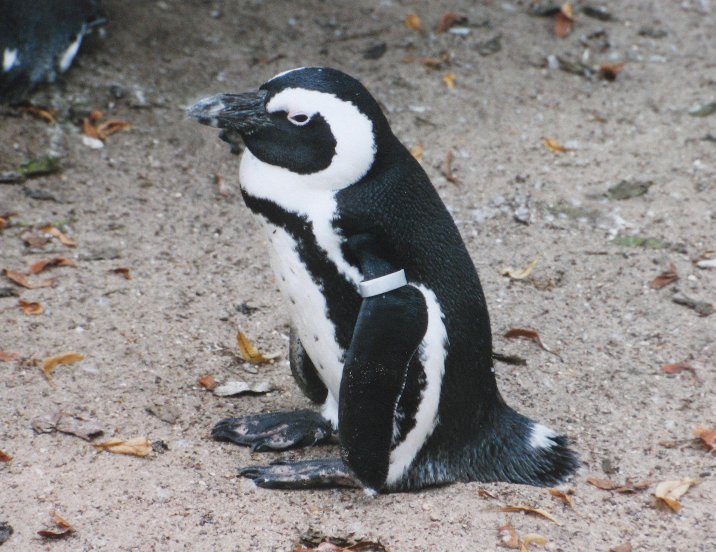

Spheniscus demersus
The African Penguin is the only penguin species that breeds in Africa, and it is found nowhere else. Also called Black-footed penguin, it lives on the south-western coast of Africa. There is a mainland colony in Boulders Beach, where penguins will allow people to approach them as close as one meter (three ft).
They have a black stripe and black spots on the chest, the pattern of spots being unique for every penguin, like human fingerprints. They have pink glands above their eyes. The hotter the penguin gets, the more blood is sent to these glands so it may be cooled by the surrounding air, thus making the glands more pink. Their distinctive black and white coloring is a vital form of camouflage: white for underwater predators looking upward and black for predators looking down onto the dark water. Like all penguins, African penguins have bones that are solid (unlike the hollow bones of flying birds), to increase body weight and provide ballast when diving. Penguins are near-sighted on land but have excellent vision underwater. Because they drink sea water in the wild, a nasal gland excretes concentrated saline solutions from the bloodstream. The excess solution is expelled from the nostrils and onto the beak where the bird shakes it off.
African Penguins feed primarily on fish such as anchovies, sardines, horse mackerel and round herrings, supplemented by squid and crustaceans. When on the hunt for prey, African Penguins can reach a top speed of close to 20 km/h.
They are a monogamous species and the lifelong partners take turns to incubate their eggs and feed their young.
The above picture was taken at the Artis Zoo of Amsterdam, in July 2005.
Genus Spheniscus
Family Spheniscidae
Order Sphenisciformes
Class Aves
Subphylum Vertebrata
Phylum Chordata
Kingdom Animalia
Life on Earth
Index